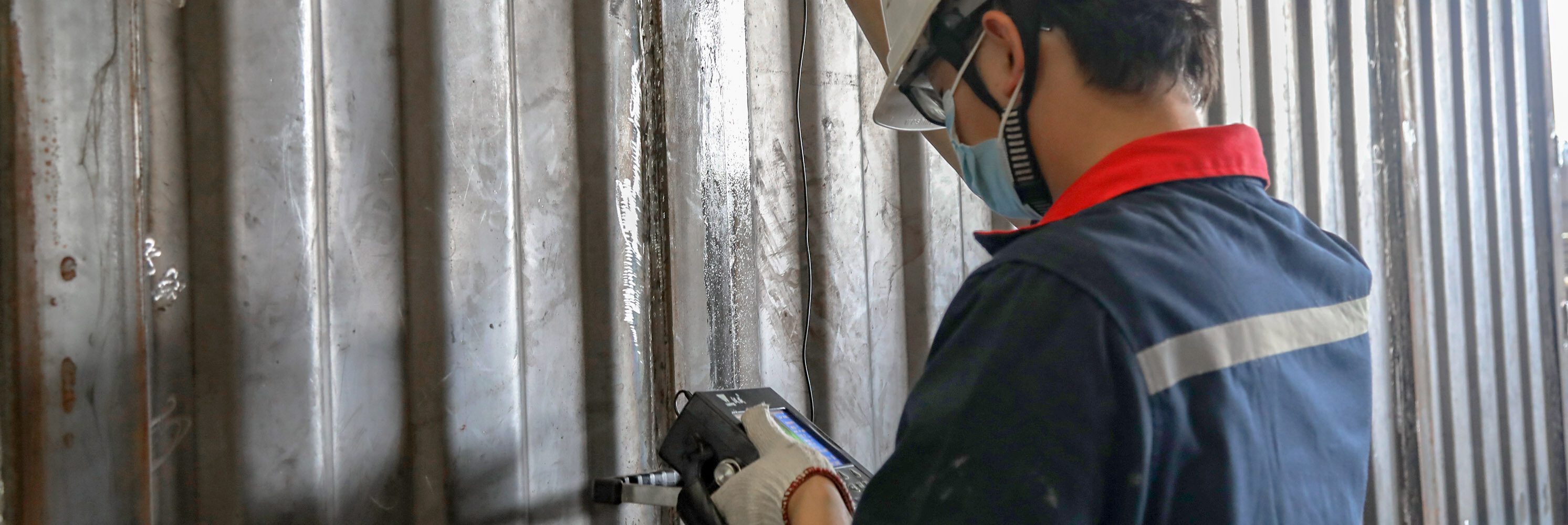The quality of our welds are tested by inspectors who certified UT and RT licenses.
Both UT & MT are one of the top five conventional nondestructive testing techniques.
UT (Ultrasonic Testing):
The frequency commonly used in ultrasonic flaw detection is 0.5-5 MHz. This kind of mechanical wave can propagate at a certain speed and direction in the material, and it will be reflected when encountering heterogeneous interfaces with different acoustic impedances (such as defects or the bottom surface of the measured object).
This reflection phenomenon can be used for ultrasonic flaw detection, the most commonly used is the pulse echo flaw detection method, the voltage emitted by the pulse oscillator is applied to the probe , the probe The emitted ultrasonic pulse enters the material through the acoustic coupling medium and propagates in it. After encountering a defect, part of the reflected energy returns to the probe along the original path, and the probe converts it into electrical pulses, which are enlarged and displayed on the oscilloscope screen by the instrument.
According to the position and amplitude of the reflected wave of the defect on the phosphor screen , the position and approximate size of the defect can be determined. In addition to the echo method, there is also a penetration method in which another probe is used to receive the signal on the other side of the workpiece. When using the ultrasonic method to detect the physical properties of the material, the characteristics of the sound speed, attenuation and resonance of the ultrasonic wave in the workpiece are often used.
RT (Radiographic Testing)
Radiation detection essentially uses the energy of electromagnetic waves or electromagnetic radiation (X-rays and gamma rays). As rays penetrate an object, they interact with matter, weakening their intensity due to absorption and scattering. The degree of intensity attenuation depends on the attenuation coefficient of the material and the thickness of the ray penetrating the material
The principle of radiography: If there is a defect in the part of the workpiece to be transilluminated, and the attenuation coefficient of the material constituting the defect is different from that of the test piece. The attenuation coefficient of steel, the transmitted ray intensity of this local area will be different from the surrounding area. Put the film in an appropriate position to make it photosensitive under the action of transmitted rays, and get the negative after darkroom processing.
After the ray penetrates the workpiece, due to the difference in the transmitted ray intensity between the defective part and the intact part, the blackness difference will appear in the corresponding parts on the negative. The radiographer can identify the location and nature of the defect based on the difference in blackness by looking at the negative.

